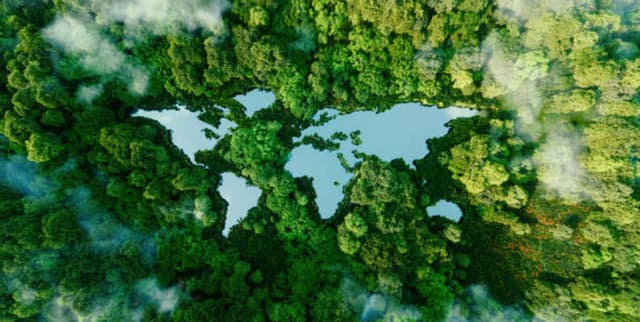National Ecological Deficit and Reserve Data
Data Science and Analytics
Tags and Keywords
Trusted By




"No reviews yet"
Free
About
Measures a population's demand on ecological assets, quantifying the natural resources consumed and the waste generated, particularly carbon emissions. This analysis tracks the utilisation of six productive surface area categories: cropland, grazing land, fishing grounds, built-up land, forest area, and the land required for carbon absorption. It contrasts this Ecological Footprint with a nation's biocapacity, which is the productivity of its own ecological assets across these same areas. The dataset provides a clear picture of whether a country is running an ecological deficit or has a reserve by comparing its consumption footprint to its biocapacity.
Columns
- Country: Name of the country.
- Region: The geographic region to which the country belongs.
- SDGi: The country's Sustainable Development Goals index score.
- Life Expectancy: The average life expectancy in years.
- HDI: The Human Development Index, which is a composite score for life expectancy, education, and per capita income.
- Per Capita GDP: The Gross Domestic Product (GDP) per person.
- Income Group: The income group classification of the country (e.g., LI for Low Income).
- Population (millions): The total population of the country in millions.
- Cropland Footprint: The ecological footprint from cropland activities, measured in global hectares per person.
- Grazing Footprint: The ecological footprint from grazing activities, measured in global hectares per person.
- Forest Product Footprint: The ecological footprint from forest product activities, measured in global hectares per person.
- Carbon Footprint: The ecological footprint of carbon emissions, measured in global hectares per person.
- Fish Footprint: The ecological footprint associated with fish consumption, measured in global hectares per person.
- Built-up land: The ecological footprint of urban and built-up land, measured in global hectares per person.
- Total Ecological Footprint (Consumption): The total consumption footprint, measured in global hectares per person.
- Cropland: The biocapacity of the country's cropland, measured in global hectares per person.
- Grazing land: The biocapacity of the country's grazing land, measured in global hectares per person.
- Forest land: The biocapacity of the country's forest land, measured in global hectares per person.
- Fishing ground: The biocapacity of the country's fishing grounds, measured in global hectares per person.
- Built-up land: The biocapacity of the country's built-up land, measured in global hectares per person.
- Total biocapacity: The total biocapacity of the country, measured in global hectares per person.
- Ecological (Deficit) or Reserve: The calculated difference between total ecological footprint and total biocapacity.
- Number of Earths required: A calculation of how many Earths would be needed if the global population lived like the average person in that country.
- Number of Countries required: A calculation of how many countries of the same biocapacity would be needed to support its population's lifestyle.
Distribution
- Format: CSV
- Size: 29.78 kB
- Structure: The dataset contains 182 records and 24 columns.
Usage
This dataset is ideal for analysing national and regional resource consumption patterns against biocapacity. Researchers can explore the relationship between economic indicators like GDP and HDI and a country's ecological impact. It can be used for environmental policy analysis, sustainability reporting, and educational purposes to illustrate the concept of ecological deficit and overshoot. Economists and social scientists can model the factors driving ecological footprints and investigate sustainable development pathways.
Coverage
The dataset provides global coverage, including data for 182 countries across 8 distinct geographic regions. The temporal scope is for the year 2023. While population data is available for all 182 countries, some metrics such as SDGi, HDI, and various footprint and biocapacity components have missing values for a small number of countries.
License
CC BY-NC-SA 4.0
Who Can Use It
- Environmental Researchers: To study the drivers of ecological footprints and assess national sustainability.
- Policymakers and Government Agencies: For developing environmental regulations and national sustainability strategies.
- Economists: To analyse the links between economic development, consumption, and natural resource constraints.
- Educators and Students: As a practical tool for teaching concepts of sustainability, resource management, and global inequality.
- Non-Governmental Organisations (NGOs): For advocacy work related to environmental protection and sustainable development.
Dataset Name Suggestions
- Global Ecological Footprint and Biocapacity 2023
- National Ecological Deficit and Reserve Data
- Country Sustainability Metrics: Footprint vs. Biocapacity
- 2023 Global Resource Consumption and Biocapacity
- Ecological Footprint of Nations
Attributes
Original Data Source: National Ecological Deficit and Reserve Data
Loading...
